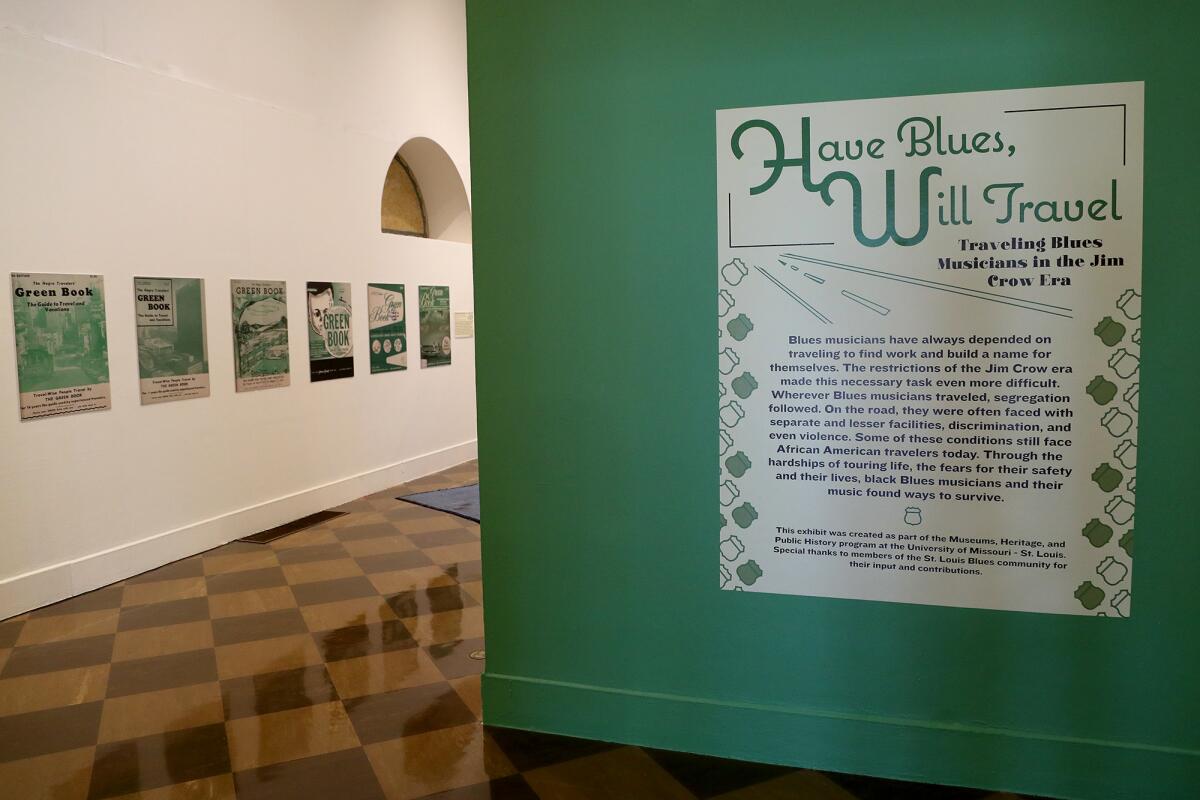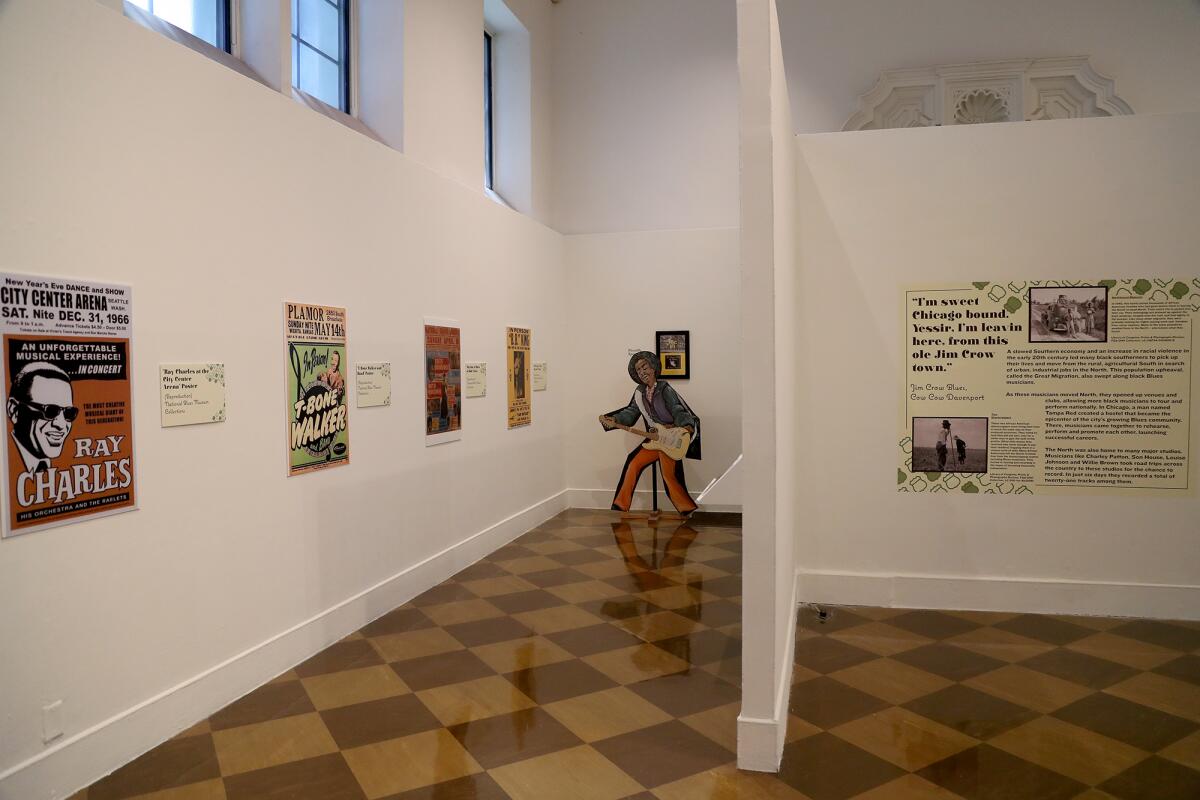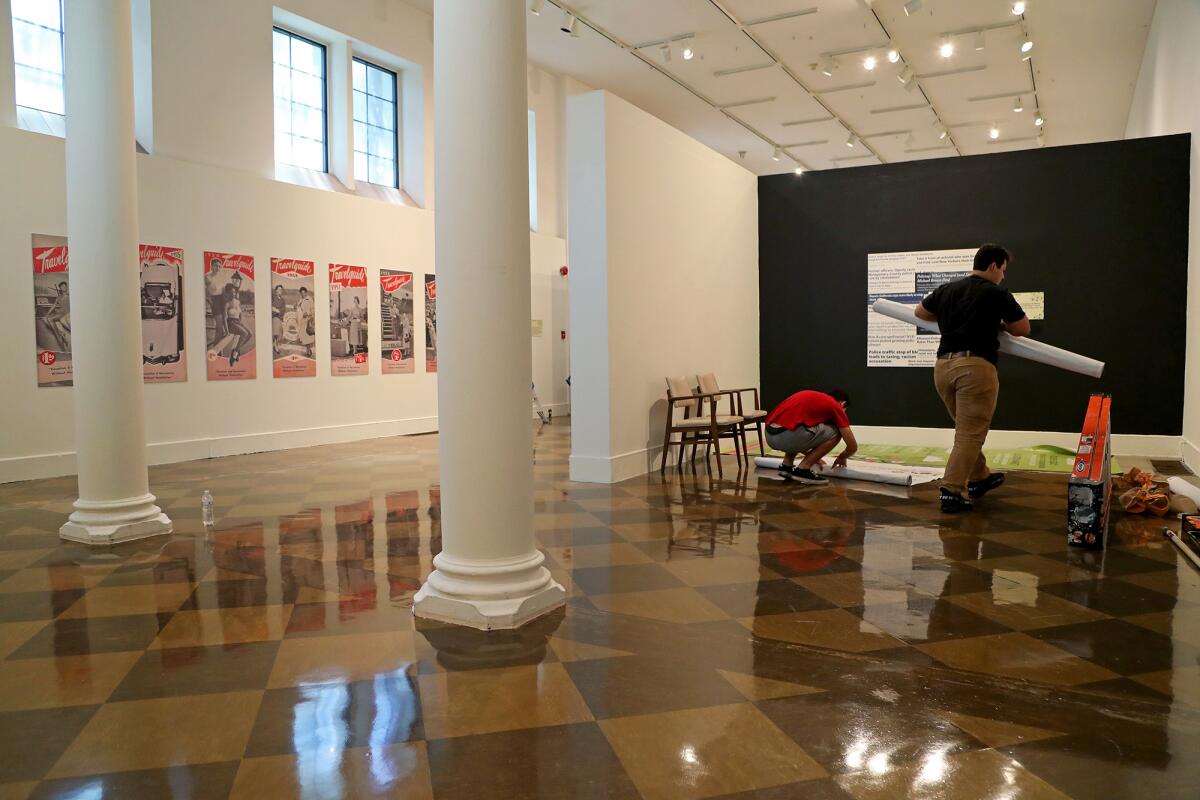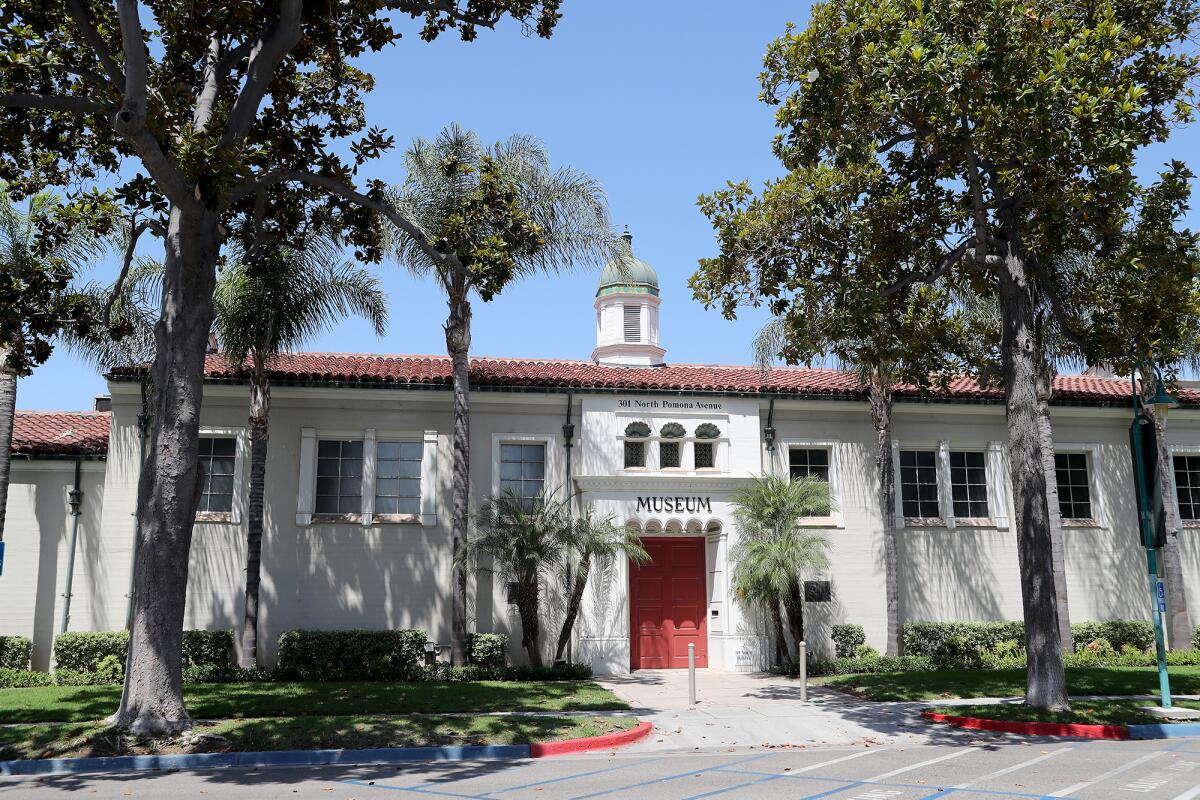The blues and ‘Green Book’ make a stop in what was once a sundown town

- Share via
The National Blues Museum’s traveling exhibit “Have Blues, Will Travel” landed in Orange County this week.
Fullerton Museum Center, which has been closed since March 2020, reopened its beer and wine garden on Thursday evening and the indoor exhibit on Saturday.
The show is centered on the hardships and inequality Black blues musicians faced while traveling to play concerts in the Jim Crow era, which meant the segregation of hotels, restaurants and bathrooms. Some cities also placed restrictions on who could be on their streets after dark. Such conditions made traveling for the Black musicians a challenge at best and fatal at worst.
Visitors will be serenaded by blues music while walking through a selection of posters on view featuring the likes of Fats Domino, Muddy Waters, Ray Charles and B.B. King to name a few.

Across from the posters are various cover editions of the “Negro Motorist Green Book,” a pocket-sized guide published for Black roadtrippers. The guide was established in 1936 by New York City mailman Victor Hugo Green. It provides a comprehensive list of friendly hotels, restaurants, gas stations, beauty parlors, barbershops and more.
The guide became essential for Black musicians who relied on touring to make money from their music, especially since they were not paid royalties on their songs in the way white musicians were.
The exhibit’s collection of book covers show how the guide grew from including New York exclusively, to all of the United States and parts of Mexico, Canada, Bermuda and the Caribbean. On an interactive U.S. map, visitors can use dry erase markers and suggested itineraries to visualize a trip.
The guide fell out of use in 1964 as segregation became illegal after the signing of the Civil Rights Act. However, one of the visuals at the end of the exhibit connects the Jim Crow era to present day newspaper headlines showing how driving while Black can be just as dangerous.
Although one won’t find Orange County marked anywhere in the 1940 edition guidebook that visitors can pick up and flip through, toward the end of the show there’s work that contends with Fullerton having been a “sundown town.”
Also, it’s noted that Disneyland was the only O.C. location listed in the 1960s editions of the guide.
“It’s an important historical exhibit that’s also relevant to the things that are going on today in terms of people of color,” said Janet Buzan, the museum board president.
Elvia Rubalcava, directing operational advisor, said the thought process in selecting exhibits for the museum is informed by wanting the surrounding community to see themselves reflected in the art, lectures, movie series or performances.

The museum staff and volunteers had about four weeks to reassemble as a group and add to the already-curated traveling exhibit the O.C. connections, after the Fullerton City Council decided in June to fund the museum’s reopening.
FMC has a contract with the city through 2024, making Fullerton responsible for staffing, utilities and maintenance while the museum board’s role is to raise funds for the costs of exhibits and educational programming.
The council’s decision came after a year of uncertainty about whether the museum was going to permanently close.
Three months after closing the museum in 2020 due to the coronavirus, the city completely defunded it. All part-time staff and three full-time staff members were laid off by September while one member of the staff was reassigned to another city department.
Community members started a “Friends of Fullerton Museum Center” Facebook group with 888 members and an online petition with 2,887 signatures in support for a museum reopening.
Buzan said people wrote postcards, called City Council members and bought gifts from the museum’s shop or purchased museum memberships to show their support.

After the November 2020 elections, the musuem’s board members continued a conversation with the council and reopening the facility eventually made its way back into the meeting agenda by June.
The city reimbursed the museum $51,770 to cover cancellation fees and other costs. It also granted $100,000 to go toward the museum’s reopening costs for about six months at a reduced schedule.
Typically, the city budgets more than $600,000 per year for the museum, which itself brings in more than $160,000 via its beer and wine garden, gift shop and other fundraising resources.
“The fact that at the June meeting all five council members wanted to see the museum succeed and reopen is a very positive sign that even though Fullerton has severe financial issues, they wanted to find some solution to at least get it up and going,” said Buzan.
A small group of contracted staff were brought in to prepare for the building’s reopening and an outdoor open mic series in early August.
“Now, we have a group that’s really interested in volunteering and that’s probably how we’re going to be able to survive — through volunteers and insurance for now, especially with our tight budget. But the community is excited even if we are only open three days a week,” said Rubalcava.
In the next six months, the City Council will reevaluate whether to award the museum another $100,000.
The museum board plans to apply for grants, host new exhibitions including “Land as Kin,” talk about whether they can welcome back schools and determine what their relationship to the city should look like in the future.
“We have a lot of goals. We also know the reality of the situation. We’re still in a pandemic,” said Rubalcava. “This is an important part of, not only Fullerton’s history but, its future. We want it to succeed.”
The “Have Blues, Will Travel” opening reception will take place July 24 from 6 to 9 p.m.
If you go
What: “Have Blues, Will Travel”
When: July 24 to Aug. 31, Thursday from 4 to 8 p.m.; Fridays and Saturdays from noon to 4 p.m.
Where: Fullerton Museum Center, 301 N. Pomona Ave., Fullerton
Cost: Adults $10, children ages 5 to 18 $5, children under 5 free
Info: www.fullertonmuseum.com
All the latest on Orange County from Orange County.
Get our free TimesOC newsletter.
You may occasionally receive promotional content from the Daily Pilot.




